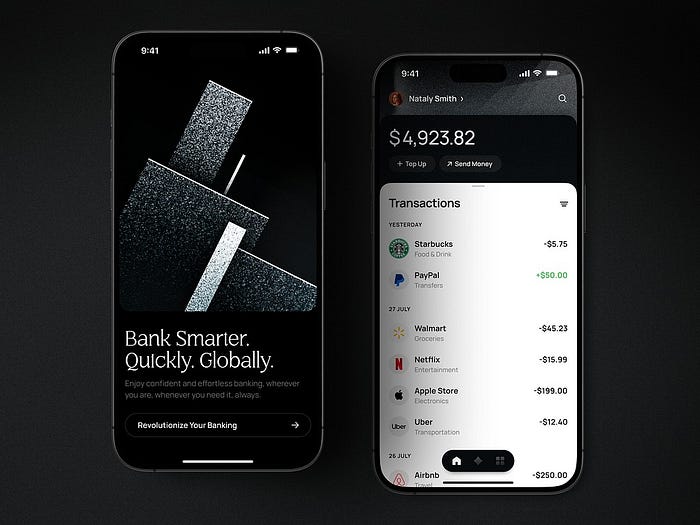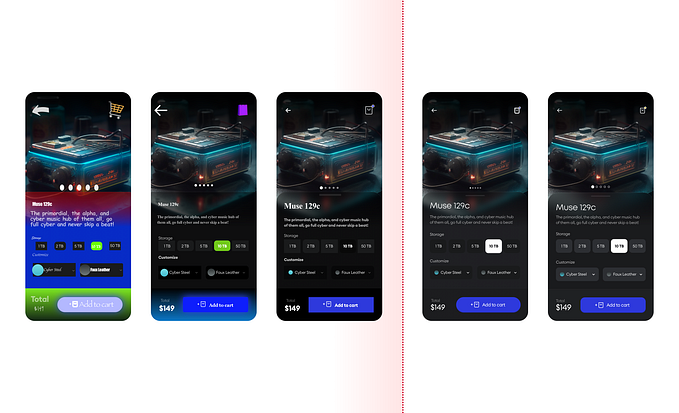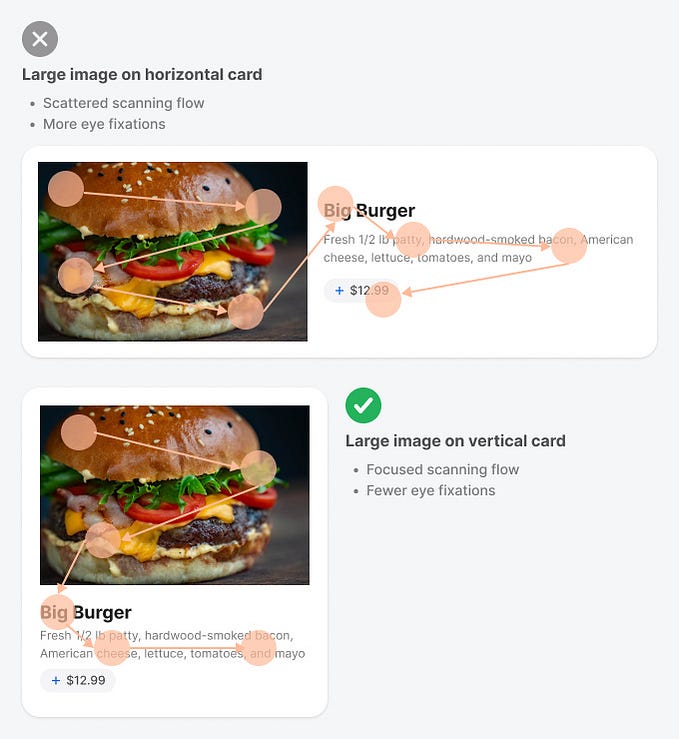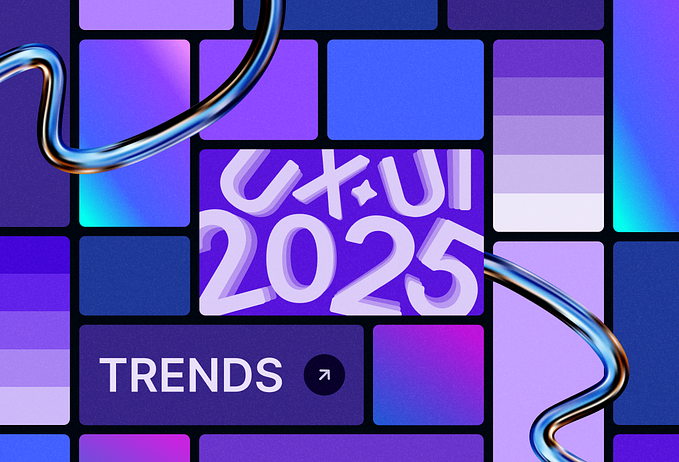Top 10 UI/UX Design Trends Reshaping the Future in 2025
Written by Mary Moore and the Shakuro Design team

With 2025 approaching, the demand to discover and implement the proper UI/UX design trends is greater than ever. The stakes are high; taking the incorrect path typically results in uninspired user experiences and wasted chances in a competitive industry.
It’s easy to get overwhelmed by looking at so many trends that are on the rise. Who are the inventions that will truly connect with users, and who are the fads?
We’ll cut through the chaff with the Shakuro design team to showcase the 10 most influential UX trends for 2025. By the conclusion of this article, you’ll be more prepared to build engaging, user-centered designs that meet and surpass expectations.
Top UI/UX trends for 2025
AI becomes a must
Artificial Intelligence grows exponentially: now it helps automate operations and save budgets, such as prototype building, graphics production, research conducting, etc. Instruments like Relume.io or Otio.ai give several services laser-focused on app design and development. The use of Artificial Intelligence in production is expected to become a UI design trend next year.
Videos will increasingly rely on artificial intelligence as well. Sora recently demonstrated almost natural quality in its services. However, before the presentation, several companies raced to be the first and most in tune with creating equivalent neural networks that allowed for video generation, with positive results. So, AI will create vast segments of presentation components for you.
The same goes for different designs and 3D texts. December was full of announcements about AI generators making incredible feats in this discipline.

A new spiral in AI evolution
Artificial Intelligence has grown roots in the industry as a UX design trend. For the time being, it thinks and provides solutions to problems; soon, it will act. That does sound ominous, but let us explain.
McKinsey considers these “agentic” systems existed for several decades. They can act independently in the virtual environment. With AI and NLP, “agents” are now learning to utilize internet tools, plan their activities, cooperate, and interact with others. In other words, AI-powered agents can execute complex workflows that require multiple stages. This greatly accelerates the design and development processes and saves you a lot of time and money.
Website builders taking over
Businesses are switching to website builders like Webflow. These solutions are obviously cheaper, and now they also offer a cutting-edge toolkit: AI assistants, Lottie and Spline support, CMS APIs, etc. In 2025, website builders will continue to gain users and become a website design trend. With their effectiveness and flexibility, the Overton window for custom web development is narrowing.

Increased connectivity
Satellite connectivity and 5G technology provide better interactivity and real-time updates for mobile apps. Satellites can cover those places to which no other device can reach, ensuring connectivity in places where traditional networks may fall short.
Extended connection allows applications to thrive in industries such as agriculture, logistics, and emergency services, where ordinary connectivity is not reliable. All these UI/UX developments affect consumers in their daily lives by offering more integrated and responsive smart solutions.

Silent login
The user confirms their identity with little or no dynamic input from them. This strategy takes advantage of different tools to reduce confusion and enhance security during login or authentication.
As a UI/UX agency, you can use it in apps where security is essential, like banking, for example. You can integrate secure login using biometric recognition: fingerprint, voice, face, etc., device recognition, or session tokens.

High-level interactivity websites
Still-looking designs will be less and less popular. In web development technologies, a “creative developer” role has gradually started gaining momentum and has significant popularity in many organizations.
A high degree of interactivity will be a web design trend of 2025; expect increased popularity of that position next year.
Developers will compete for the creation of a cooler 3D spinning donut in the web banner using as little code as possible.

AR and VR are still popular
Regardless of the decline in sales last year, enterprises still invest in immersive technology. AR and VR let businesses take a step further away from the real world and enable new opportunities for customers.
Apple launched the headgear, Vision Pro, which triggered the curiosity of people and companies alike. They started investigating immersive experiences for e-commerce, interior design, and e-learning.
Other trends like glassmorphism and multilayering further support these UX design concepts. In glassmorphism, you have the ability to show the user that there’s something else behind it — the object overlaid. Because of that, the physical environment does not get totally replaced by the user interface. You could have an endless workspace with multi-layering in immersive reality since you can open several windows that you could attach to all types of places, all inside one program.

Who turned off the light
People are interested in health and well-being, and you can fulfill their needs with more relevant options through your UI/UX design services. For example, dark mode. It is a standard option that reduces eye strain, especially when there is poor light in the environment, making users enjoy staying longer on the app. This mode also facilitates accessibility for visually impaired people or those sensitive to light. Dark mode for text-heavy applications helps reduce glare, drawing emphasis to the content. This feature creates a more inclusive experience for all users.


New year, same looks
The UI/UX design trends haven’t changed much in terms of aesthetics, because the giants in the industry aren’t making any innovations. Classic looks will be relevant.
If anything is going to make the tables turn, it will be Apple or Android launching an upgrade with a radically different design. Do you remember when Windows introduced that oddly designed bento style? Or when Apple transitioned from skewmorphism to flatness? We’re talking that amount of change.

Monopoly in the market
Figma chased away all possible competitors. Some discreetly exited the industry, while others, such as Framer, delved into app development. According to their available jobs, 2025 will see the introduction of new features with a clear direction: designer + developer = one language.
Take advantage of 2025 UI/UX trends
UX trends will continue to adapt to technological changes, user needs, and the digital environment.
Artificial intelligence has already affected many aspects of design. Simplification and automation are a must now. Smart assistants allow you to save time and effort for more important things. You can make use of highly interactive designs to create immersive and intuitive delightful experiences for your target audience.
Originally published at https://shakuro.com









